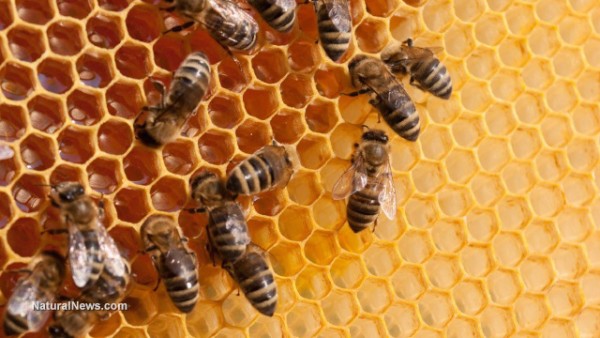
On January 12, the EPA admitted for the first time that three commonly used neonicotinoid pesticides – clothianidin, thiamethoxam and dinetofuran – pose a significant risk to bee populations. The agency’s updated analysis also acknowledged the threat posed by a fourth neonicotinoid compound – imidacloprid – which can harm both pollinators and aquatic insect species.
But on the very same day that the analysis was released, the EPA also announced that it had withdrawn its support for a proposal to introduce limited restrictions on the use of neonicotinoids in fields where honey bees are present. In place of the proposed restrictions, the agency announced a set of voluntary guidelines that do not impose mandatory compliance. (RELATED: Read more news about pesticides at Pesticide.news)
Director of the Center for Biological Diversity's Environmental Health program, Lori Ann Burd, said:
"It's outrageous that on the same day the EPA acknowledged these dangerous pesticides are killing bees it also reversed course on mandating restrictions on their use. This is like a doctor diagnosing your illness but then deciding to withhold the medicine you need to cure it."
The fact that the EPA has confirmed the threat to pollinators posed by neonicotinoids, while refusing to restrict their use, speaks volumes about the influence the pesticide industry wields over the agency’s policies regarding their use.
So what exactly are neonicotinoids, and why are they so dangerous to bees and other pollinator species?
From Eco Watch:
“Neonicotinoids are a class of pesticides known to have both acute and chronic effects on honey bees, birds, butterflies and other pollinator species, and they are a major factor in overall pollinator declines. These systemic insecticides cause entire plants, including their pollen and nectar, to become toxic to pollinators. These chemicals are also slow to break down and they build up in soil, where they pose an especially grave threat to thousands of species of ground-nesting native bees.”
In 2016, a United Nations committee published a new study on the subject of pollinators and the danger they face as a result of human activities. The committee found that 40 percent of all invertebrate pollinators, such as bees and butterflies, are threatened with extinction – a prospect that has grave implications for humanity.
Ninety percent of the world’s flowering plants depend on bees and other pollinators. Around 75 percent of all crops depend on pollinators (mainly bees). This represents about 1.4 billion jobs and nearly $600 billion worth of crops. (RELATED: Read more news about the environment at Environ.news)
It’s becoming clear that neonicotinoids are more of a threat to pollinators than previously believed. In response, the EU has banned neonicotinoids altogether, and in 2016, the pesticides were banned from use in United States national wildlife refuges.
But in spite of all the evidence, the EPA has created a policy that does no more than ask the agricultural industry to consider not spraying neonicotinoids in fields where commercial honeybees are present. In other words, the EPA is doing nothing to address the problem.
“This is a rejection of science that should be deeply troubling to all Americans,” said Burd.
Indeed, it is troubling when an agency charged with protecting the environment refuses to take into account its own findings, but rather rules in favor of an industry that poses one of the most significant threats to the environment – along with the humans and animals who depend on it.
The big question now is: How will the incoming administration handle this and other urgent environmental issues while simultaneously creating a climate favorable to business interests, as it has promised?
The outcome should be interesting, to say the least. …
Sources:
Please contact us for more information.























